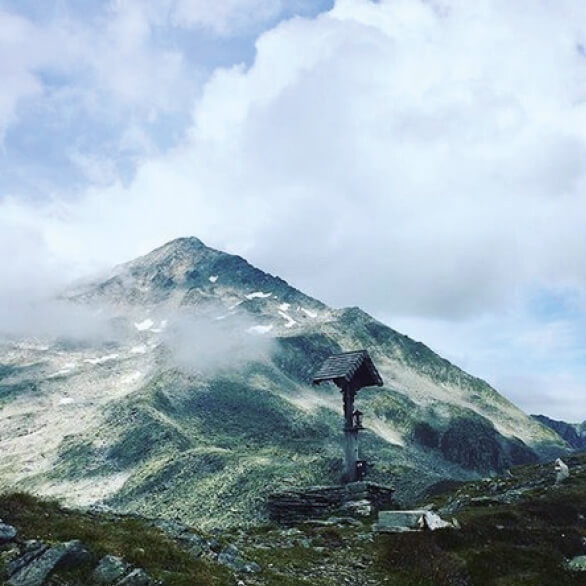What belongs in any case in the backpack
With every step in the mountains, a backpack that is too heavy makes itself felt. Therefore, the basic principle is: as little as possible. However, you should have these 13 things with you.
Since on the mountain compared to the beach almost nothing can be quickly procured, which one has forgotten, enclosed a list of the thirteen most important things, which one should have with an ambitious day hike in the mountains in any case, so that one can enjoy the hike relaxed even as a hiking novice.
We do not need to say a word about sure-footed sturdy hiking boots
They are a prerequisite for a mountain hike. We can well understand the thoughts of the mountain rescue team, who flew a mission by helicopter because someone was walking in the mountains with inadequate footwear and injured himself in the fall.
What are the essential things to have in your backpack?
Attached is a helpful list. If it’s only a few months before you go hiking, just print out the download for it, because before you leave on a vacation, despite the best intentions, it usually does get hectic.
1. change underwear
It’s not without reason that a change of underwear is at the top of the list. Climbing upwards for many kilometers makes even experienced hikers sweat. On the mountain top, a cool to icy wind usually blows. Dry underwear, a T-shirt and a fresh hiking shirt are therefore essential if the mountain excursion is not to end with a severe cold.
An extra warm jacket takes up space in your backpack, but is important in case of a sudden change in weather. You won’t regret packing a warming jacket in your backpack, even if it was still bright sunshine when you started in the valley.
2. rain cover
Even if the weather forecast looks good. The weather in the mountains can change faster than expected. A rain jacket always belongs in the backpack. The tips from mountain guides on how best to behave in an approaching thunderstorm, you can read in preparation here.
3. cell phone
The Europe-wide emergency call in the mountains is: 112. This connects you to the mountain rescue control centers. In addition, there are still direct mountain rescue emergency numbers in the respective countries and regions, which you can best ask for locally. Your cell phone (battery fully charged) will not have reception everywhere in the mountains, but the phone gives you an extra chance to call for help in case of an emergency.
Many hiking routes can be found on the Internet and downloaded in advance. If you don’t feel like constantly looking at your phone screen while hiking in the mountains or don’t want to be guided by GPS, take your cell phone with you for emergencies and also pack a beautifully old-fashioned mountain map and compass in your backpack.
4. Sunscreen
A high SPF sunscreen belongs in your backpack, so you can use it to refresh the protection you applied in the morning. The higher you climb, the more intense the solar radiation. Snowfields on the mountains reflect the sun’s rays additionally, so good quality sunglasses are also a must.
5. Water
Not everywhere there are hikers’ cabins; in the off-season they are often not staffed. A supply of water that can be refilled later at a spring is therefore advisable.
6. Medication
You should have important medications with you, even if only a day trip is planned. The irritant climate in the mountains should not be underestimated and anyone who is prone to headaches, for example, can quickly be surprised by a headache attack in the mountains, especially when the foehn is blowing.
Disinfectant, a face mask for the stop in the hut as well as a gauze bandage for the case should be likewise in the backpack.
7. Hat
A hiking hat is not an attempt to look alpine, but a wise investment. The head cools down very quickly in the mountains and is often exposed to fierce wind, rain or strong sunlight high up. Loden or pure wool are traditionally and for good reason excellent materials to protect the head.
8. Food
You probably need less than you think. But some fruit, chocolate and the classic bread roll are always a good idea at lofty heights; especially in the off-season when many hikers’ huts are closed.
9. Gloves
With them, it is much easier to find a foothold on sharp boulders or to bravely reach into the mud when necessary. Therefore, pack a pair of gloves in your backpack in all seasons.
10. Flashlight
Even if you plan early in the morning to be long back at the hotel or mountain hut by late afternoon, it can happen that you are surprised by the darkness. A flashlight with full batteries therefore also belongs in the backpack. Hopefully you will never need it, but if you do, the flashlight will become a very important tool on dark trails.
Some hikers prefer headlamps. If you’ve never used them before, it’s worth practicing with them a bit during your morning jog before the mountain tour.
11. Pocket knife
A good pocket knife is always handy in the mountains. In the best case, you need the knife only for salami, butter and bread.
12. Aluminum rescue foil
In the car, the aluminum rescue foil is always with you. In the mountains, it can serve well at least for a while in case of a fall and the onset of cold weather. It therefore also belongs in the hiking backpack.
13. Camera
It would be too bad if you couldn’t show the breathtaking views from the mountain to anyone later. You probably still have a camera at home, even if you otherwise only take pictures with your cell phone. The cell phone battery is quickly depleted and you should reserve the phone for emergencies and the occasional look at the weather app.
Are you missing something?
With this list, which you can also find in the download, you have the most important things for a one-day hike. If you’re on your way with countless other hikers, a busy lift leads up to the mountain, and several open huts are on your way, you can naturally reduce the contents of your backpack. Multi-day hut hikes require additional things.
However, should you be fortunate enough to have chosen a quiet hiking route that offers you maximum peace and relaxation in the mountain scenery over the course of a day, you can set out relaxed with the aforementioned things in mind.
You may wonder why walking sticks are not on this list? Here we follow the advice of an experienced mountain guide, who recommends poles only when the musculoskeletal system is restricted in its movement due to illness or an injury.
The poles help to spare already damaged joints. For healthy, uninjured hikers, mountain guides advise against hiking with poles. The body gets used to the use of the poles and loses a bit of the natural abilities of balance, coordination and surefootedness on the mountain.
GM DOWNLOAD >>>





